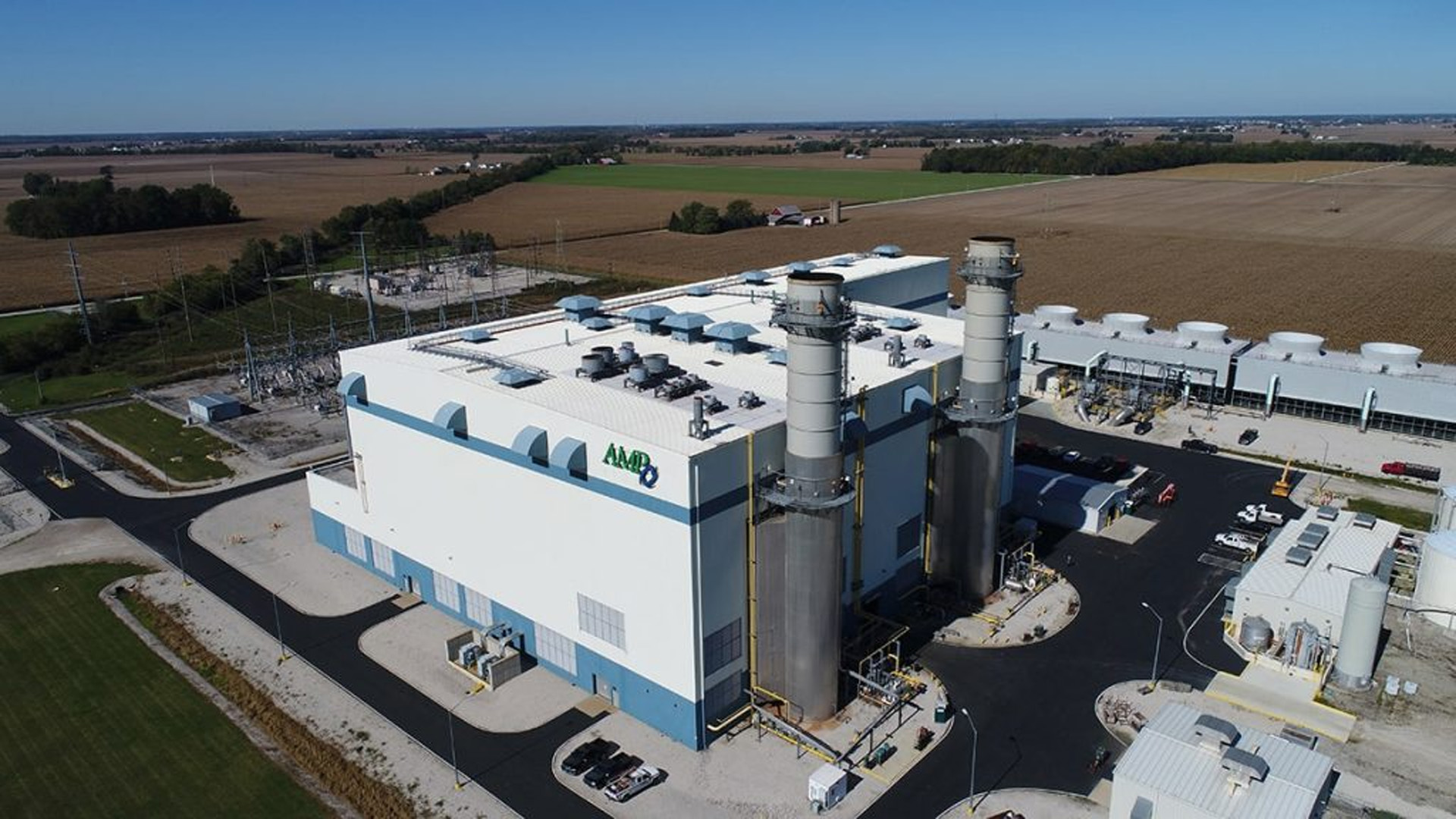AMP Fremont is a 540 MW nominal load 2 x 1 natural gas fired generating station with 163 MW of duct-firing capacity.
American Municipal Power (AMP) and its members self-operate several electric plants. However, for its first combined-cycle gas turbine facility – the 703 MW Fremont Energy Center in northwestern Ohio – AMP enlisted NAES based on its extensive experience in combined-cycle plant operations and greenfield plant startups. By hiring the third-party operator, AMP hoped to achieve optimal performance without the lengthy learning curve usually associated with a new plant and technology.
Multiple Owner Support
NAES’ experience in working with a client’s asset management team and with multiple-owner projects provided several benefits to AMP and its 100-plus participating members. For one, NAES was able to quickly build and manage the operating budget while establishing administrative processes that streamlined decision-making efforts. NAES’ proven procedures provided an effective methodology to assist the owner in reviewing and approving the annual operating and capital budgets. With an approved budget and effective procurement procedures, NAES was able to make timely purchases of materials, supplies and services to support the owner’s operating objectives.
Timely, Economical Staffing Plan
When AMP engaged NAES, Fremont was ready to begin commissioning and startup procedures. To stay on schedule, NAES had to aggressively recruit, train and qualify an operating staff of 23, with the first employees arriving on site in just over four weeks from Notice to Proceed. To shorten the learning/training curve, NAES transferred six seasoned personnel from other NAES facilities, reducing the time needed to implement their time-tested processes and procedures.
For the balance of the staff, NAES hired talented employees from the local area who had worked in both union and non-union environments. Because the wages and benefits offered were competitive with prevailing packages in the area, and personnel were satisfied with the professional management of the plant, the facility has remained non-represented.
Owner-Operator Teamwork
At the time AMP acquired the Fremont Energy Center, it maintained a robust regulatory support department of environmental and NERC professionals at its Columbus, Ohio, offices. Following Notice to Proceed, AMP and NAES identified and assigned detailed roles and responsibilities for environmental and NERC tasks. NAES employees at the site were able to perform monitoring and data preparation tasks that complemented AMP’s reporting responsibilities. When the company experienced support-staff changes, they were able to transition additional environmental responsibilities to NAES site and corporate personnel. This agility on the part of NAES staff, who also took on additional procurement responsibilities, has resulted in an overall cost savings for AMP.
Best Practices Improve Plant Safety and Reliability
With AMP’s blessing, NAES has pursued a number of best practice improvements at the Fremont Energy Center. Two of these were recognized by Combined Cycle Journal (CCJ) in its 2015 Best Practice Awards: a combustion turbine (CT) package fire-protection system upgrade and an improved identification system for electrical switchgear.
The fire-protection upgrade was prompted by NAES personnel discovering that the gas detectors in the combustion-turbine packages were operating erratically. This led to sporadic trips and potentially unsafe conditions. After researching several solutions, NAES opted to route all eight gas-detection sensors in each CT to a new programmable logic controller (PLC) panel after converting the digital signals to analog. The only modification required was to pull new signal wires to the sensors. This change has resulted in zero erroneous trips and enhanced monitoring of potential gas in the CT packages.
Following commissioning, the site received an accurate but cumbersome set of electrical drawings that often presented challenges when it came to matching components with the specific electrical sources feeding them. This had the potential to cause errors in Lock-Out/ Tag-Out (LOTO) procedures.
NAES personnel embarked on a project to create a set of drawings that clearly illustrated the power source for each piece of equipment. These drawings presented a visual representation of the physical layout of each motor control center (MCC) and panel board. In addition, they color-coded each electrical switchgear line-up and attached copies of the associated drawings to cabinet fronts. Site employees can now perform LOTO duties more accurately with a reduced chance of error.
